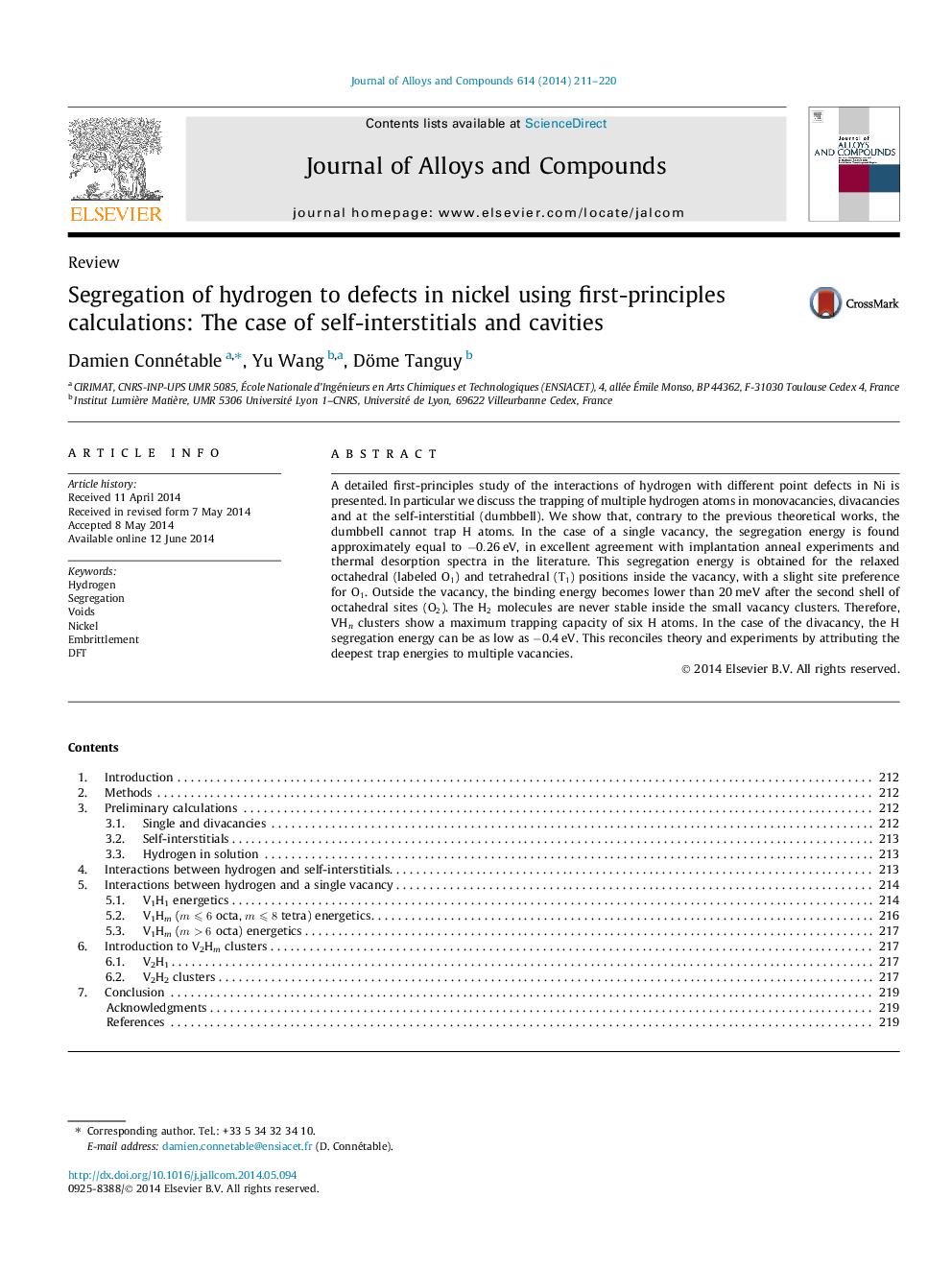| کد مقاله | کد نشریه | سال انتشار | مقاله انگلیسی | نسخه تمام متن |
|---|---|---|---|---|
| 1610558 | 1516279 | 2014 | 10 صفحه PDF | دانلود رایگان |
A detailed first-principles study of the interactions of hydrogen with different point defects in Ni is presented. In particular we discuss the trapping of multiple hydrogen atoms in monovacancies, divacancies and at the self-interstitial (dumbbell). We show that, contrary to the previous theoretical works, the dumbbell cannot trap H atoms. In the case of a single vacancy, the segregation energy is found approximately equal to -0.26-0.26 eV, in excellent agreement with implantation anneal experiments and thermal desorption spectra in the literature. This segregation energy is obtained for the relaxed octahedral (labeled O1O1) and tetrahedral (T1T1) positions inside the vacancy, with a slight site preference for O1O1. Outside the vacancy, the binding energy becomes lower than 20 meV after the second shell of octahedral sites (O2O2). The H2H2 molecules are never stable inside the small vacancy clusters. Therefore, VHn clusters show a maximum trapping capacity of six H atoms. In the case of the divacancy, the H segregation energy can be as low as −0.4 eV. This reconciles theory and experiments by attributing the deepest trap energies to multiple vacancies.
Journal: Journal of Alloys and Compounds - Volume 614, 25 November 2014, Pages 211–220
